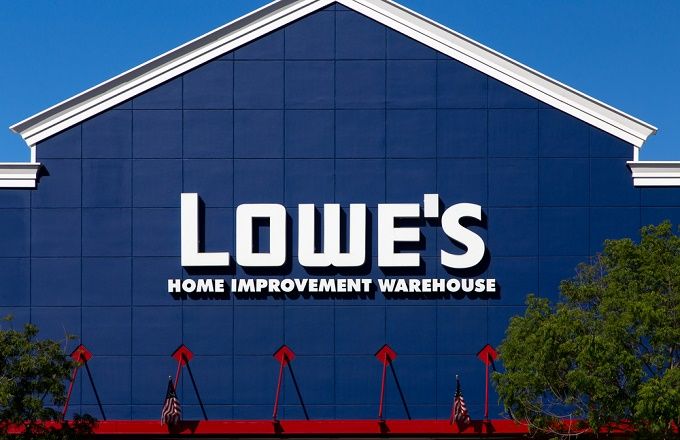by Nick Getaz, CFA, Portfolio Manager, Research Analyst, Franklin Equity Group, Amritha Kasturirangan, Portfolio Manager, Research Analyst, Franklin Equity Group, Matt Quinlan, Portfolio Manager, Franklin Equity Group, Nayan Sheth, CFA, Portfolio Manager, Research Analyst, Franklin Equity Group, Franklin Templeton
Health care’s innovation-driven growth and inherent resilience makes it a natural fit for dividend growth investors, according to Franklin Equity Group.
Technology in health care has historically driven a broad range of innovation, from the doctor’s office to the operating room, to the pharmacy. The role of technology in health care is often underappreciated. Many investors think of the large information technology giants when they consider the role technology plays in their lives, but technology’s reach is broader and is shaping the future of every industry. We believe numerous technology applications will shape the health care industry and impact people’s health care experiences.
These broad technology applications can provide a range of growth opportunities while, at the same time, offering relatively more resilient performance. Technological innovation combined with secular forces such as demographics-driven demand can enable stable earnings growth through a range of economic environments. Despite their role in improving the quality and duration of life, these technologies often don’t enjoy the spotlight or generate the excitement of more consumer-facing applications. These “under the radar technology” companies can provide opportunities for investing in life-changing innovation as well as stable growth and better downside protection, often at more attractive valuations than some widely discussed innovation leaders.
One example of how innovation is overlooked can be seen in something as simple as a syringe, where the development of safety technology to protect health care workers against exposure to blood-borne pathogens and drugs through accidental needle pricks has provided significant benefits. This technology has proven so successful that safety syringes have become the standard of care across multiple countries, and such regulatory mandates enable resilient revenue streams. Packaging is a similarly unappreciated application of technology in the health care field. While new biopharmaceutical molecules often garner all the attention, drug packaging requires innovative materials technology. High-value molecules increasingly require specialized packaging to prevent contamination and minimize wastage.
While the technology behind safety syringes and packaging solutions may not seem particularly exciting, both products are inexpensive yet critical components of their value chains. They also drive strong pricing power, have regulatory tailwinds enabling durable revenue streams, and benefit regardless of which biopharmaceutical molecule ultimately wins share. We expect these technologies to be increasingly valuable in the fast-growing category of injectable weight-loss drugs as this develops in the future.
Innovation is quickly reshaping operating rooms as well. In recent years, surgical robotic systems have served as an extension of a surgeon’s hands and eyes, effectively reducing variation in surgical outcomes, and enabling more procedures to be done with fewer complications. In soft-tissue surgeries, robots enable minimally invasive procedures to be performed with greater precision and accuracy. Orthopedic robotic platforms are expanding beyond their initial focus on hip and knee implants to include shoulder and spinal surgeries. And for the detection of cancer, robots that resemble long, retractable tubes are being used to reach deep into the lungs.
Data analytics are increasingly being integrated into these technologies, with examples including video and image capture which can be used for training, review and planning. “Smart” orthopedic implants with embedded processors, which collect and transmit real time surgical data, are being used to improve surgical outcomes, thereby reducing the need for additional surgeries. And while much of the world is starting to learn the potential for artificial intelligence (AI) technologies, many companies in this space have experience implementing AI technologies to enable predictive and decision-making applications. Uses include the early detection of disease, projection of disease development and suggested patient management. The integration of AI, data analytics and robotics can result in powerful outcomes. As an example, an AI-enabled platform for the real-time monitoring of surgical blood loss, as captured in sponges, is improving maternal mortality rates in labor and delivery rooms. AI has also been incorporated into shoulder replacement surgeries, where it is used to recommend specific implants.
Information systems are increasingly vital for connecting laboratories and pharmacies to doctors’ offices and hospitals to ensure the seamless integration of data and workflows, enabling faster and smarter communication and decision-making. These platforms have become critical elements of workflow and the move to software-as-a-service business models means that the revenues from these industry-specific platforms are likely to be more stable throughout the economic cycle.
Within a pharmacy, the automation of pill counting and packaging allows pharmacists to focus on higher-value-added tasks and results in fewer errors in dispensing medication. These technology applications are driving cost efficiencies across the system, allowing the industry to expand into new areas, such as long-term care.
Health care, the second largest sector exposure in the S&P 500 Index today, contains market leaders shaping the future through innovative products, technologies and systems. The sector encompasses investments in companies developing leading technologies for surgical robotics, novel packaging solutions, drug dispensing and numerous other areas. Companies designing health plans to improve access and care are using these innovative advances to drive efficiency and bend the cost curve, in an effort to advance quality of care and longevity of life. We remain excited by the innovation-driven change technology continues to bring to the sector.
Innovations in health care make the sector a natural fit for dividend growth investors
Market-leading companies in the health care sector can deliver sustainable, profitable growth as well as robust free cash flow to sustain innovation investment going forward. This powerful dynamic can lead to consistent and substantial dividend growth over time, contributing to strong total performance. A company’s sustainable and substantial dividend growth can be viewed as confirmation of a high-quality, resilient business model capable of growing steadily through the business cycle. We believe health care’s innovation-driven growth and inherent resilience makes it a natural fit for dividend growth investors. In our view, health care remains an attractive area as new opportunities arise where elements like artificial intelligence, already an important part of many of these existing technologies, evolve and grow in importance. Health care-focused technology will continue to be an important source for innovation-fueled growth, with a bias toward resilient business models that we believe dividend growth investors should find appealing.
* * *
WHAT ARE THE RISKS?
All investments involve risks, including possible loss of principal.
Equity securities are subject to price fluctuation and possible loss of principal.
Dividends may fluctuate and are not guaranteed, and a company may reduce or eliminate its dividend at any time.
To the extent a strategy focuses on particular countries, regions, industries, sectors or types of investment from time to time, it may be subject to greater risks of adverse developments in such areas of focus than a strategy that invests in a wider variety of countries, regions, industries, sectors or investments.
Investments in fast-growing industries like the technology and health care sectors (which have historically been volatile) could result in increased price fluctuation, especially over the short term, due to the rapid pace of product change and development and changes in government regulation of companies emphasizing scientific or technological advancement or regulatory approval for new drugs and medical instruments.
Active management does not ensure gains or protect against market declines.
IMPORTANT LEGAL INFORMATION
This material is intended to be of general interest only and should not be construed as individual investment advice or a recommendation or solicitation to buy, sell or hold any security or to adopt any investment strategy. It does not constitute legal or tax advice. This material may not be reproduced, distributed or published without prior written permission from Franklin Templeton.
The views expressed are those of the investment manager and the comments, opinions and analyses are rendered as at publication date and may change without notice. The underlying assumptions and these views are subject to change based on market and other conditions and may differ from other portfolio managers or of the firm as a whole. The information provided in this material is not intended as a complete analysis of every material fact regarding any country, region or market. There is no assurance that any prediction, projection or forecast on the economy, stock market, bond market or the economic trends of the markets will be realized. The value of investments and the income from them can go down as well as up and you may not get back the full amount that you invested. Past performance is not necessarily indicative nor a guarantee of future performance. All investments involve risks, including possible loss of principal.
Any research and analysis contained in this material has been procured by Franklin Templeton for its own purposes and may be acted upon in that connection and, as such, is provided to you incidentally. Data from third party sources may have been used in the preparation of this material and Franklin Templeton (“FT”) has not independently verified, validated or audited such data. Although information has been obtained from sources that Franklin Templeton believes to be reliable, no guarantee can be given as to its accuracy and such information may be incomplete or condensed and may be subject to change at any time without notice. The mention of any individual securities should neither constitute nor be construed as a recommendation to purchase, hold or sell any securities, and the information provided regarding such individual securities (if any) is not a sufficient basis upon which to make an investment decision. FT accepts no liability whatsoever for any loss arising from use of this information and reliance upon the comments, opinions and analyses in the material is at the sole discretion of the user.
Products, services and information may not be available in all jurisdictions and are offered outside the U.S. by other FT affiliates and/or their distributors as local laws and regulation permits. Please consult your own financial professional or Franklin Templeton institutional contact for further information on availability of products and services in your jurisdiction.
Issued in the U.S. by Franklin Distributors, LLC, One Franklin Parkway, San Mateo, California 94403-1906, (800) DIAL BEN/342-5236, franklintempleton.com – Franklin Distributors, LLC, member FINRA/SIPC, is the principal distributor of Franklin Templeton U.S. registered products, which are not FDIC insured; may lose value; and are not bank guaranteed and are available only in jurisdictions where an offer or solicitation of such products is permitted under applicable laws and regulation.
CFA® and Chartered Financial Analyst® are trademarks owned by CFA Institute.














